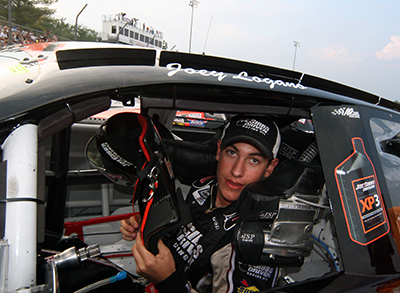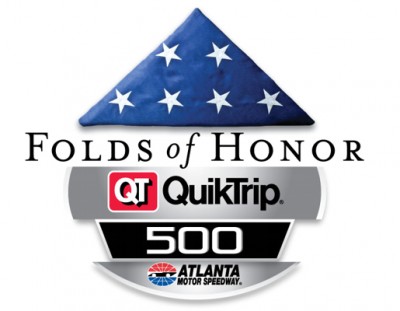Ford Racing’s domination of Daytona Speedweeks, including wins in the Truck, XFINITY and the Daytona 500, may just be traced back to all of the technology developed in the off-season by the manufacturer.
This week’s NASCAR Behind the Scenes takes a peek behind the magical technology curtain of the Ford Racing Technical Support Center.
“The main thing that we’ve worked on with the Ford Racing Technical Center in Concord, North Carolina is really combining a lot of the tools we had in other facilities before, from the kinematics machine measuring camber and toe to the chassis torsional twist rig used to determine stiffness of the car.”” Mark Rushbrook, Ford Racing Engineering Motorsports Manager, said. “We also have a vehicle center of gravity machine used to measure the height of the car and a coordinate measurement machine that enables teams to measure their components for quality control.”
“But the key thing that we have which has really moved things forward in terms of technology is the driving simulator. It runs a full dynamics model for the vehicle, whether Sprint Cup car, Xfinity car or IMSA car.”
“It allows full driver engagement where they sit in the cockpit to get the motions of what is happening in the car,” Rushbrook continued. “They are viewing a giant screen in front of them with a three meter radius with projectors that give them the full sensation that they are actually driving the car. So, this is a tool that has been used in Formula 1 and some other road racing successfully and we’re using that now as a tool in our arsenal to help with driver training, as well as car and chassis set ups for both NASCAR and IMSA.”
Because of the NASCAR testing ban, the driving simulator has become even more important in the off season and during this new season. And the Ford Racing Technical Support Center has risen to that challenge by virtually making every track available through that simulator.
“At this point, we have all of the NASCAR tracks programmed,” Rushbrook said. “It is a very high graphics representation of the race track itself and everything in the surroundings. You really want the driver to feel like he is there at the track. So, it’s even got the graphic detail for the stands, for flags, for trees, for everything that is on the sides of the track.”
“So, as the driver drives around the track, it’s the same visual cueing that he would get as if he is driving the real car. It’s a laser scanning of the track surface to get the representation of it.”
“It gives the full six degrees of freedom to move the drivers up and down as they go over bumps, have the pitch and yaw and roll. It doesn’t do exactly what you see on the track but it’s the cueing representation of it such that they are immersed in it.”
“The drivers believe and feel that they are driving around the actual track with the motion they are doing. We also have helped it be even more real through high frequency vibrations that are piped in through the structure of the cockpit to make it feel even more real. So, you get that vibration that you would feel from the engine actually coming up through the structure of the cockpit and up through the seat.”
According to Rushbrook, the driving simulator even helps the drivers when they take an unexpected excursion off the track or into another race vehicle.
“If you hit the wall and spin out or whatever you do, it’s not the same sensation of having the thirty or sixty ‘g’ force feeling but you do get the sensation of the car spinning into the infield or down into the grass,” Rushbrook said. “So, there is some realism there for sure.”
With Ford Racing’s success during Daytona Speedweeks, there is no doubt that the drivers, crew chiefs and teams will continue to be lined up at the front door of the Technical Support Center.
“At this point, we are continuing to develop our tools to make sure it is very well correlated,” Rushbrook said. “We have the race teams come in and have time slots available. It will be almost like a test session at each track. The driver, crew chief and race engineers come in. You don’t need the pit crew because you are not physically changing parts but they all come in. You change the set up in the computer model, the driver drives those changes, provides feedback and they can keep iterating through their setups just like they do at the track.”
While Ford Racing declines to disclose the investment made in the Technical Support Center, they do acknowledge that it is significant. And according to Rushbrook, “It reflects our seriousness and how well we want to do in racing.”
“We know the real payout will be in the 2015 season as we are truly applying it.”
The payout has most certainly begun for Ford Racing after such a dominating Speedweeks and much of that success may be the responsibility of the Technical Support Center.
“You can’t ask for a better weekend starting out with the truck race and Brad Keselowski’s truck team winning and then Ryan Reed wining the XFINITY race for Roush Fenway Racing and now Team Penske and Joey Logano with the Daytona 500 championship,” Raj Nair, Group Vice President, Global Product Development, Ford Motor Company, said. “What a start for Ford in 2015. We are now 4-for-4 in all the major races we have competed in. We couldn’t ask for a better start to the year.”
“I think it is really starting to pay dividends with all the work we have done on the technical front and all the homework we did in the off-season.”
“Whether it is the EcoBoost engine of the FR9 engine all the engines in all three NASCAR series’ I think it really shows the teamwork of working together in a One Ford way and that it can really pay dividends.”







